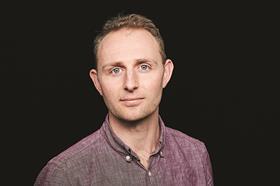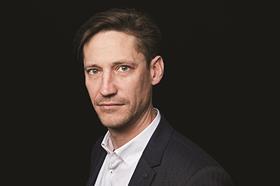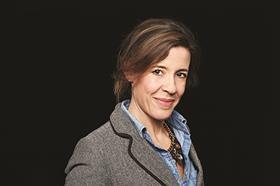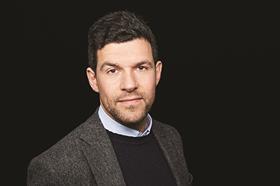Built from the beginning in a context of eco-awareness, the work of these Young Architect of the Year nominees has been green-tinted from the start. But what do they think of the state of sustainability today?

The drive to improve the sustainability of the built environment has taken a hammering in the past year. The biggest blow was the government’s decision to axe the requirement that all new homes should be built to the zero carbon standard by this year. It was one of a series of post-general election environmental volte-faces performed by ministers in the name of economic productivity.
However, the up and coming practices shortlisted for this year’s Young Architect of the Year award haven’t given up on the sustainability dream. While earlier generations of architects probably learnt about eco-building when they were well into their careers, it has been integral to the architectural education of the YAYA prize finalists.
Indeed, many of the shortlisted practices explicitly state that they set up in business so that they could put sustainability principles into practice. Views are mixed on whether clients are still signed up to cutting carbon.
But the practices, all of which cut their teeth either during the late noughties recession and its aftermath, remain committed to the sustainability agenda.
And many are heartened by technological improvements, which are making it cheaper and easier to carry out sustainable design. An example is the glass impregnated with invisible solar power-generating filaments.
But perhaps unsurprisingly they are impatient for greater progress. Several of the shortlisted practices want the construction industry to get on with making greater use of the off-site building techniques that could potentially deliver sustainable construction solutions more cheaply. Max de Rosee, director of De Rosee SA, says: “We rely so much on guys on-site hand building. We would love there to be more of an embrace of prefabrication. That would really drive costs down.”
�ڶ����� spoke to the YAYA-shortlisted practices to find out what the built environment universe looks like to the architectural stars of tomorrow.

Fergus Feilden
Partner, Feilden Fowles
What is the biggest challenge facing the UK’s built environment, and how should it be addressed?
The building performance gap undermines all of the sustainability targets: that’s the challenge we need to get our heads around.
Has the sustainability issue run out of steam?
We haven’t really started. There are so many exciting innovations out there. We find that people coming out of university are much more engaged with these issues and informed about them.
What will be the most important innovations in sustainable design over the next three years?
It’s not directly architectural, but in transport design. We will start to see massive changes in terms of reduced personal car ownership so we may have a lot more pedestrianised areas as a result. We have opportunities to make huge efficiencies in space and parking. The design world has not fully caught up with that.
What would be your message to the prime minister about the built environment?
This government must rethink its commitment to education and invest properly in our school environments for the long term, creating robust, flexible and inspiring spaces in which to educate our children. The Priority Schools �ڶ����� Programme and the Baseline Designs for schools undermine the importance we should be placing on education, leaving a tragic legacy that will need to be addressed by future generations.

Kyle Buchanan
Director, Archio
What is the biggest challenge facing the UK’s built environment, and how should it be addressed?
Housing the population in a way that doesn’t destroy the character of our towns and cities. Part of the problem of policy at the moment is that it focuses too much on the numbers aspect of housing delivery. It’s easy to forget that to meet housing demand in London, we would need to add the equivalent of a city the size of Bristol over the next four to five years. That obviously has a massive impact on local services, transport infrastructure and affordable workspace. It’s a wide-ranging problem, which strategic planning has to be at the heart of addressing.
Has the sustainability issue run out of steam?
It’s got a lot more challenging, but it’s the absolute opposite. The debate has matured and there’s a much more general awareness that sustainability is much more complex than putting up some solar panels and a bit of insulation. Trying to create places that can bolster the existing community is critical to building that long-term sustainability. We are working on nine houses around a local village pub that has been closed for two years. The proposal is to envelop the pub with housing, which will help the client to reopen it, adding something to the village, while bolstering a critical bit of community infrastructure.
What will be the most important innovations in sustainable design over the next three years?
Most of the critical innovations are about cities and networks that can help us to use the resources we have more efficiently. Key to that is getting good data and sharing ideas, not one technology in particular.

Sam Cooper
Director, E2 Architecture+Interiors
What is the biggest challenge facing the UK’s built environment, and how should it be addressed?
How to integrate sustainability effectively is the biggest challenge across the board. We frequently see that the actual build doesn’t meet the designed performance.
Has the sustainability issue run out of steam?
This government has done a great job of taking the top off the head of steam that the industry had, which has been incredibly disappointing. That has had a knock-on effect across the board through clients, developers and architects.
What will be the most important innovations in sustainable design over the next three years?
It’s got to be decarbonisation of the (electricity) grid. Particularly working on inner-city projects, there’s only so much we can do to design out energy requirements. It’s not architecture-specific, it’s about decarbonising the grid. There will have to be innovative ways of storing renewable power so it can be used when it is required. The Code 5 house that we designed was so overshadowed that it would have been better for everyone to put solar panels on the roof of the school down the road.
What would be your message to the prime minister about the built environment?
It’s all about improving the existing stock and that won’t be achieved without incentives and serious relief from VAT and cheap loans.

Claire Sa and Max de Rosee
Directors, De Rosee SA
Claire: What is the biggest challenge facing the UK’s built environment, and how should it be addressed?
Housing is the big one. We are concerned that architecture is becoming too exclusive so that only people with deep pockets can afford to commission it. Architecture should be more affordable.
Max: Has the sustainability issue run out of steam?
No, there are some really exciting things coming. It’s not in the press as much but we note that clients
are more educated about sustainability: it’s becoming more integrated.
What will be the most important innovations in sustainable design over the next three years?
Individual properties micro-generating energy. If you have solar panels on the roof, you can start to look
at having a battery in the house so that you can use the energy in the evening that has been generated during the day.
Claire: What would be your message to the prime minister about the built environment?
Quite often design gets value engineered out. We would urge the prime minister to invest in aesthetics and for planning departments to bang the drum for good design.

The twelfth Architect of the Year awards, this year hosted by Stephen Fry, will take place at London ExCeL’s Platinum Suite in collaboration with Ecobuild, on Wednesday 9 March



























No comments yet